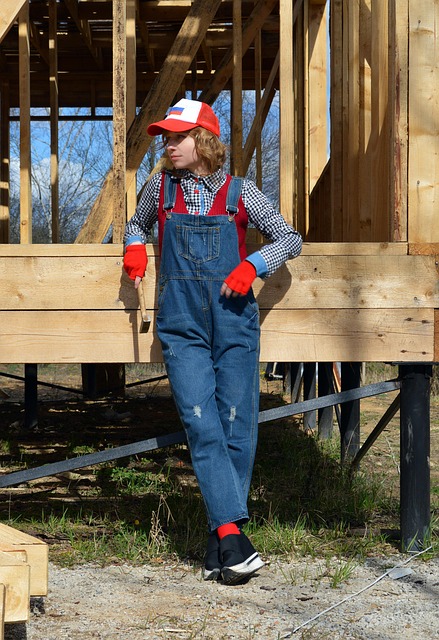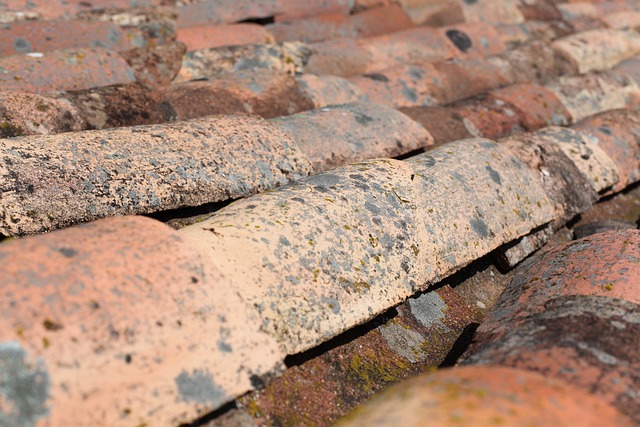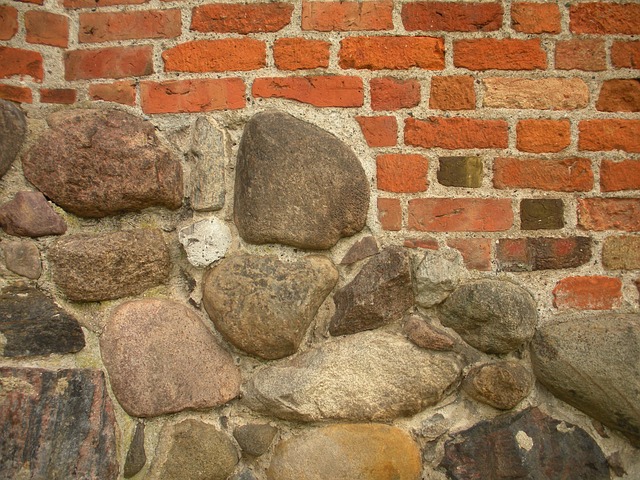Concrete stem wall damage, driven by water intrusion and soil settlement, demands immediate attention in residential foundation repair. Regular inspection is vital for prevention. Professional assessment uses advanced tools to pinpoint issues. Repairs require specific materials (e.g., concrete mix with steel reinforcement) and meticulous techniques, like crack cleaning and filling with epoxy. Reinforcement methods like steel rebar or mesh fabric enhance structural integrity. Waterproofing is critical to prevent moisture intrusion. Budgeting considers repair scope and local costs; multiple estimates ensure fairness. Choosing licensed specialists with proven track records ensures expert, tailored solutions. Regular maintenance, including debris removal and waterproof barriers, prevents future foundation issues.
Concrete stem walls, a crucial component of many residential foundations, are prone to damage over time. Understanding common causes like shifting soil, settlement, and water intrusion is the first step in effective repair. This article guides you through the process, from inspection and material selection to reinforcement and waterproofing, ensuring your home’s foundation remains strong. Learn about cost considerations, selecting the right contractors, and maintenance tips to prevent future stem wall damages, ultimately facilitating informed Residential Foundation Repair.
Understanding Concrete Stem Wall Damage: Common Causes

Concrete stem wall damage is a common issue in residential foundation repair, often requiring immediate attention to prevent further deterioration and structural compromise. Understanding the causes behind this damage is crucial for effective prevention and remediation strategies. One of the primary culprits is water intrusion, which can lead to erosion and weakened integrity over time. This may occur due to cracks or gaps in the concrete, allowing moisture to seep in, especially during heavy rainfall or poorly managed drainage systems.
Another significant factor is soil settlement and shifting. The weight of the overhead structure and the expansive nature of some soils can cause differential settling, resulting in cracks and misalignments. These issues are exacerbated by poor initial construction practices, inadequate compaction, or changes in ground conditions due to excavation nearby. Regular inspection and addressing these problems early on are essential components of residential foundation repair maintenance.
Inspection: Identifying Repair Needs in Residential Foundations

When addressing any residential foundation repair, a thorough inspection is paramount. It involves meticulous examination of the stem wall, searching for cracks, uneven surfaces, or signs of shifting. These issues could indicate problems like settlement, water damage, or poor construction, all requiring specific attention during the repair process.
During this critical step, professionals use advanced tools and techniques to assess the extent of damage and identify areas needing concrete stem wall repair. Proper inspection ensures that the solution is tailored to the issue, offering long-lasting stability and structural integrity for the home’s foundation.
Materials and Tools for Effective Stem Wall Repair

When it comes to repairing a stem wall, the right materials and tools are essential for achieving effective and lasting results in residential foundation repair. Concrete is a durable choice for stem walls due to its strength and longevity. For repairs, consider using a mix of new concrete and a small amount of aggregate to match the existing wall’s composition. Reinforcement with steel rods or mesh is crucial to enhance structural integrity, preventing future cracks and ensuring stability.
Essential tools include a hammer, chisel, wire brush, and a power drill equipped with various bits for removing damaged concrete. A level and tape measure help ensure the new concrete is poured accurately, maintaining the wall’s alignment. Safety gear, such as gloves and eye protection, is paramount to safeguard against debris and potential hazards during the repair process.
Step-by-Step Guide to Fixing Cracks and Deterioration

Repairing cracks and deteriorating stem walls in residential foundation repair is a process that requires careful attention to detail. Begin by assessing the extent of the damage, identifying the type of crack (vertical, horizontal, or diagonal), and determining its cause, which could be due to settlement, erosion, or structural issues. Once you’ve gathered this information, it’s time to gather your tools and materials.
Next, clean the area around the crack thoroughly to remove any debris or loose concrete. Use a chisel and hammer to carefully widen the crack at its surface, creating a V-shape. Apply an appropriate epoxy or concrete repair compound to the crack, ensuring it fills the void completely. After allowing the initial coat to dry, apply additional layers as needed for more substantial repairs. Finally, smoothen the repaired area with a trowel and inspect your work.
Reinforcement Techniques for Strengthening Your Home's Foundation

When it comes to reinforcing your home’s foundation, several techniques can strengthen and stabilize your concrete stem walls. One effective method is the use of steel reinforcement bars, or rebar, which are embedded within the concrete during construction. This simple yet powerful technique enhances the structural integrity of the walls, making them more resistant to cracks and shifts over time.
For existing structures in need of repair, additional rebar can be strategically placed to reinforce weak spots or gaps. Additionally, mesh reinforcement fabric can be used as a substitute for traditional rebar, offering a flexible yet robust solution. By incorporating these reinforcement techniques, homeowners can effectively mitigate potential issues with residential foundation repair and ensure their home’s structural longevity.
Waterproofing Measures: Protecting Against Moisture Intrusion

Waterproofing measures are an integral part of concrete stem wall repair, especially for residential foundation repair. Concrete is permeable, and when it comes into contact with water, it can lead to structural damage over time. Moisture intrusion can cause cracks, erosion, and even the breakdown of the entire structure, making waterproofing a crucial step in ensuring the longevity of your home’s foundation.
There are various methods to waterproof concrete stem walls, including applying specialized coatings, using liquid membranes, or installing drainage systems. These techniques create a protective barrier against water, preventing it from seeping into the concrete and causing potential harm. Proper waterproofing not only preserves the wall but also protects the entire residential foundation from costly repairs in the future.
Cost Considerations for Concrete Stem Wall Repair Projects

When considering concrete stem wall repair, budgeting is a significant aspect, especially for residential foundation repair projects. The cost can vary greatly depending on several factors such as the extent of damage, access to the site, and local labor rates. Smaller repairs like patching or re-sealing might be more affordable, with prices ranging from $5 to $10 per square foot. However, extensive cracks or full replacement will significantly drive up costs. It’s essential to consult multiple professionals for estimates to ensure you’re getting a fair price.
For residential foundation repair, understanding the pricing structure is crucial. Some companies may charge by the hour, while others quote based on the square footage of repair work. Material costs can also vary; using more durable products will generally increase expenses but offer longer-lasting solutions. Therefore, it’s beneficial to compare both labor and material prices to make an informed decision that aligns with your repair project’s scope and your budget.
Choosing the Right Professional Contractors for Residential Foundation Repairs

When it comes to residential foundation repairs, especially for concrete stem wall issues, selecting the right professional contractors is paramount. The process involves more than just finding a contractor; it’s crucial to choose experts who specialize in foundation work and have a proven track record. Look for licensed and insured companies with experienced technicians who can offer specialized solutions tailored to your unique problem.
Reputable contractors should provide comprehensive services, from initial inspection to repair implementation, ensuring long-lasting results. Online reviews and references from past clients are valuable tools to gauge their reliability and workmanship. Ensure they have the necessary equipment and adhere to industry standards for safety and quality, as concrete stem wall repairs demand precision and expertise.
Maintenance Tips to Prevent Future Stem Wall Damages

Regular maintenance is key to preventing future stem wall damages, an essential aspect of residential foundation repair. One of the most important steps is to keep the area around the stem walls clear of debris and water buildup. Over time, water can seep into cracks and crevices, leading to serious structural issues. Regularly inspect the walls for any signs of damage or moisture intrusion and address them promptly.
Additionally, applying a waterproof barrier before construction can significantly reduce the risk of damage. This protective layer acts as a shield against moisture, preventing it from penetrating the concrete. Maintaining proper drainage around the foundation is also crucial; ensure downspouts are directing water away from the stem walls to avoid saturation and potential harm.
